Light against Dark

A long time ago I purchased the Revenants set for the original Saga, which was basically a large set of zombies and a lich. By the time I’d finished painting them Saga II was out, and then the arrival of Age of Magic meant I already had the core of an Undead army. I fleshed these out with some extra undead figures from Gripping Beast, plus some Pathfinder bone devils and wraiths for variety.

I also have a number of late medieval mounted knights, which I decided would make for a good Great Kingdoms army. I supplemented them with some heavy infantry, some archers and a dragon to make an ‘army of good’. My plan is to use crossbows rather than archers, but my crossbowmen haven’t been painted yet.
This gave us two eight point armies to try out Saga: Age of Magic with. We both had a sorcerer and flyers (a unit of two flying creatures for the Undead, a single flying Dragon for the Great Kingdoms). The big difference though was that since the mindless zombies and wraiths didn’t contribute saga dice, the Undead army only had four saga dice, compared to 7 for the kingdoms.
In terms of background, I’m currently assuming that the Great Kingdoms are an army of the Kingdom of Furyondy, and that the Undead are a evil force out of the Lands of Iuz. For those not in the know, these are nations from the World of Greyhawk D&D setting. The green dragon being on the side of good doesn’t quite fit D&D, but I’m not that fussed.
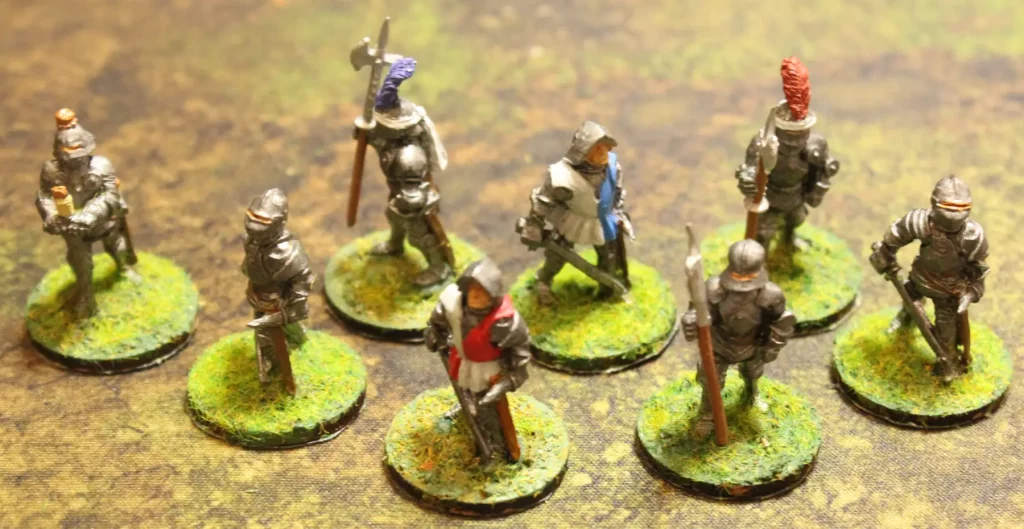
Once again we played at Farnborough Wargames, which was somewhat crowded this week due to being regulated to ‘upstairs’ and having a lot of gamers (two dozen of us) turn up.
For setup, we put down some terrain, including sacred ground for both our armies. The Undead had some menhirs from the Tainted Grail boardgame, whereas the Great Kingdoms had a ruined holy site (basically because that’s all I had available). We used the new terrain mat I got from Deepcut studios last weekend, which looked good, though it now means that the colour scheme of my bases don’t merge into the ground as well as they used to.
Things opened up with the undead moving forward, and then the forces of Furyondy started a pincer move to the left and right. I wanted to get my archers up close to the sacred ground, so they could hold that and shoot at anything that came close.
The dragon flew right across the board, ready to engage the horde of mindless undead on Iuz’s right flank. One unit of mounted knights (huscurls) moved around the woods to engage the undead warriors.
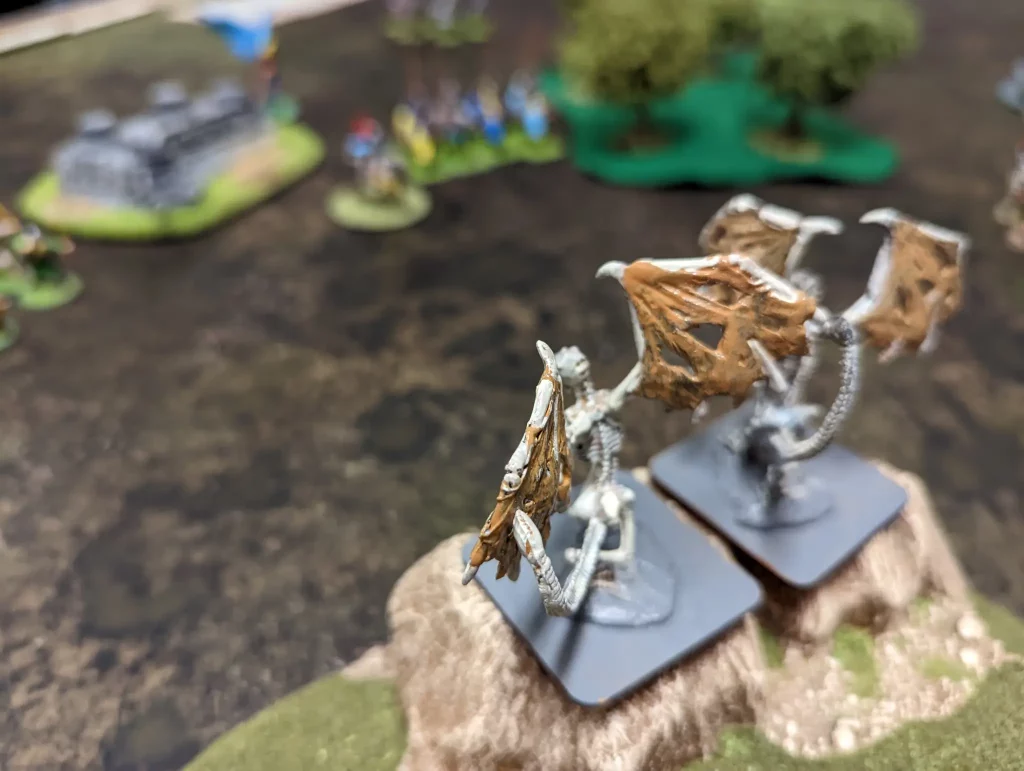

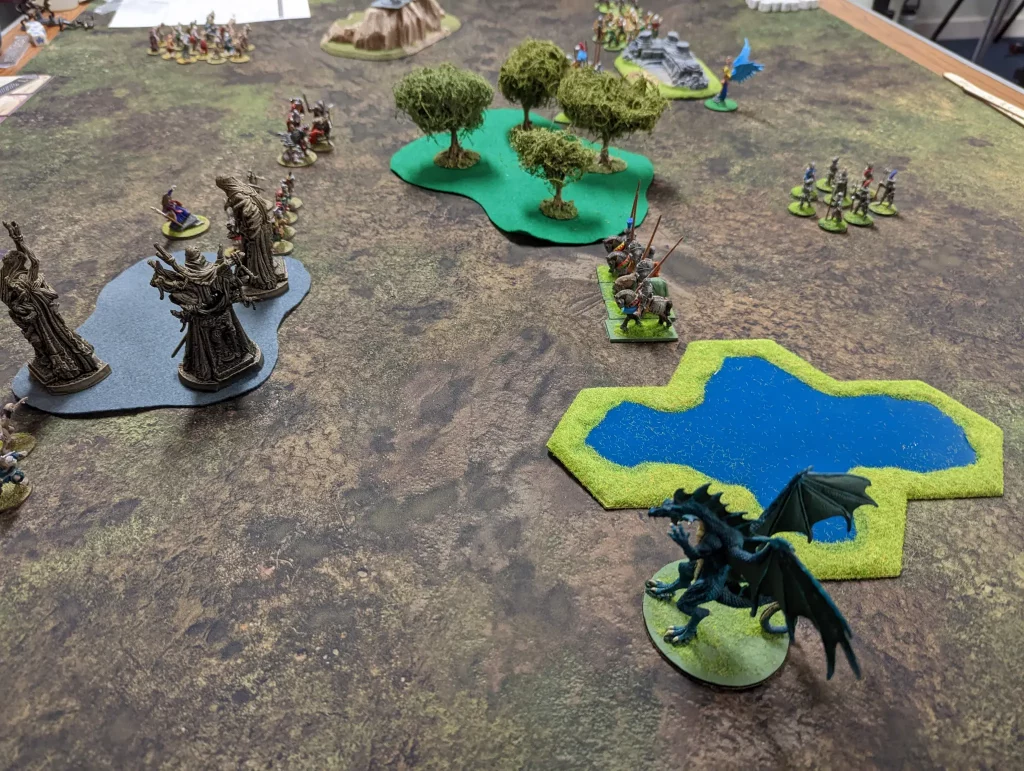
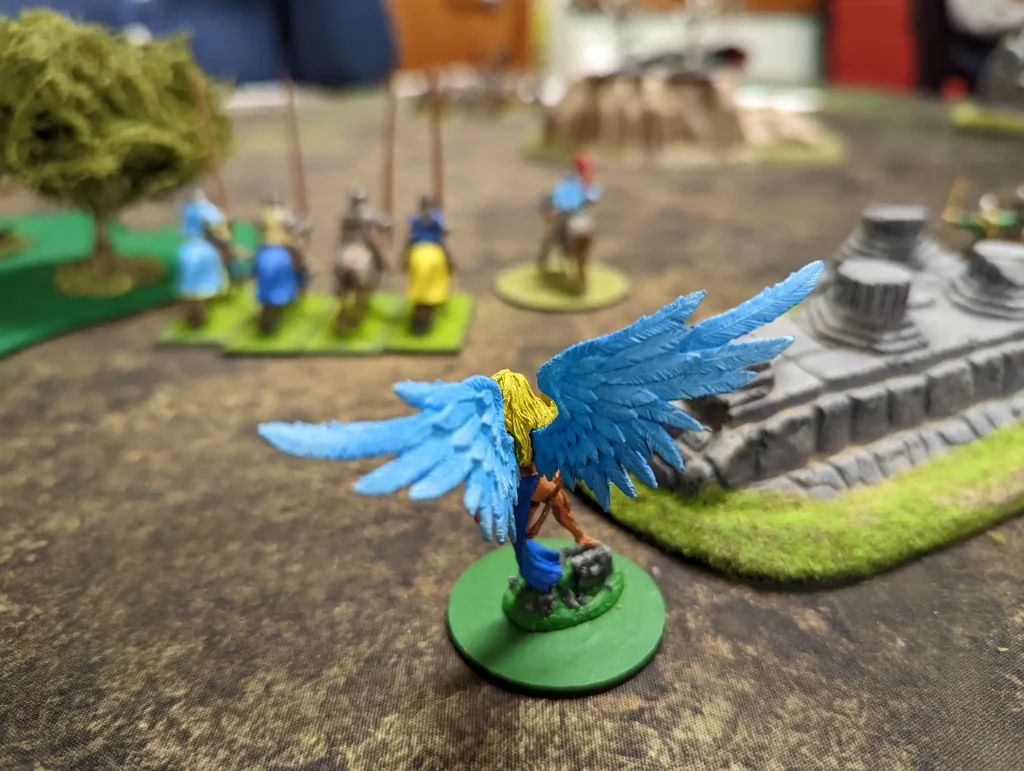
The wraiths made their one and only appearance, flying over my Warlord and the nearby knights, causing a little fatigue but not significant. Wraiths seem fairly random. They don’t provide saga dice, but can’t be attacked or killed in the normal way. When activated, they appear on the battlefield, fly over enemy units and cause a fatigue on a roll (per wraith) of 6. A unit of 4 could cause 4 fatigue, or is more likely to cause none. Then they are removed from the board, and there is a chance of each figure being lost (on a roll of 6+, modified by number of units flown over). Interesting, but I’m not convinced that they’re effective.
On my left flank, the undead sorcerer cast three spells at my knights. They took a casualty and fatigue from death and ageing, and also had the problem that they’d take an extra fatigue for every action they did. In response, they charged the skeletons, taking one casualty but killing several of the undead vermin. Only to see them get resurrected the following turn.
Meanwhile, my dragon used its fire breath (I know, it’s a green dragon, but this isn’t actually D&D) against the zombies and then charged in. With 10 attack dice against the 4 of the zombies what could go wrong? Especially when the dragon scored 9 hits against the zombies.
Unfortunately, the zombies also rolled really well, and my dragon took 4 hits. It can take 3. The horde was badly burned and mauled, but my dragon was dead. The undead sorcerer was planning on ageing the knights some more, but due to a misunderstanding of just how bad overpowering spells can get, managed to destroy themselves when they lost control of their magic.
On the Kingdom’s right flank, we were prepping to take on the undead knights and warlord.
This battle was to turn out to be the turning point of the game. The flying undead fly down to take on my sorceress, something she was unable to defend against (note to self, keep sorcerers protected). The nearby knights willingly threw themselves in the way though thanks to her bodyguard ability, and she was saved.
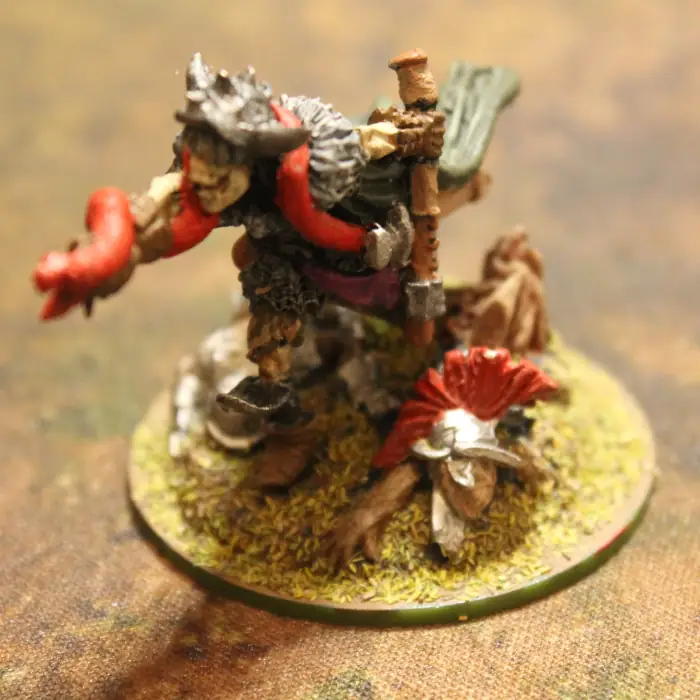
Then the undead warlord charged in, attacking my warlord but was driven back. I charged back with my knights, and the warlord was defeated.
It was a relatively quick game, and the first game of Saga I’ve won in a long time. In retrospect, the Undead army was probably badly designed. Due to having originally painted the army for the original Revenants supplement, I had enough zombies for three units of mindless. I’d cut it down to two for this army, but it should probably be reduced to one. The cost in Saga dice is quite high.
The wraiths also, whilst interesting, probably aren’t worth the cost. It may be that they’re powerful if used well, but we may have to think about that.
The undead sorcerer’s use of magic (until they destroyed themselves) was effective (taking an extra fatigue for every activation is bad), but the good sorcerer didn’t get to do much.
The Undead army was a lot more aggressive than the player is used to – they normally place the Irish in Saga, which is a very defensive army. The low number of Saga dice made it extra difficult to efficiently bring everything into play.
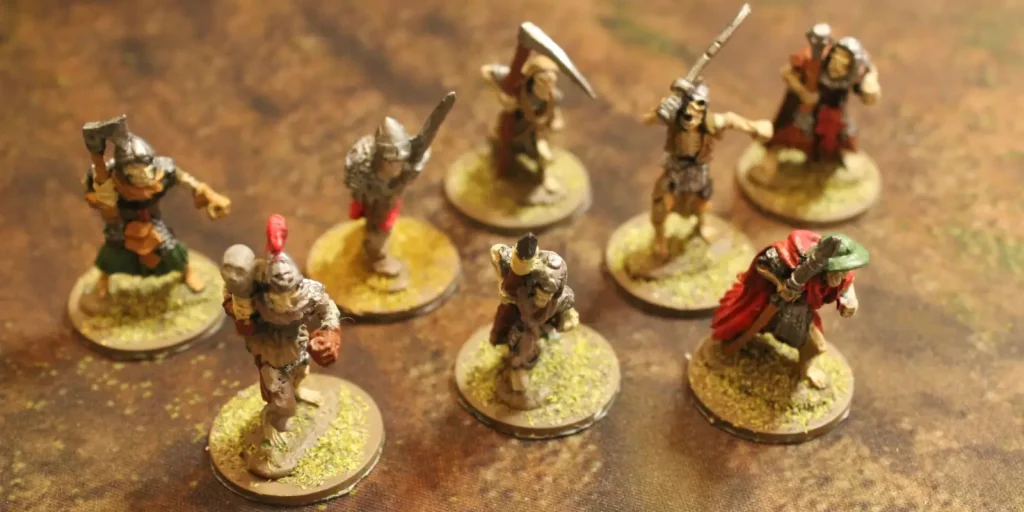
The Great Kingdoms worked well, but was also a much more traditional army. Except for the dragon and the sorcerer they wouldn’t have been out of place in a more historical Saga game. Some of the abilities (such as allowing multiple units to shoot simultaneously) weren’t much use without multiple units of shooters, but there were some good standard abilities for just getting more attack dice.
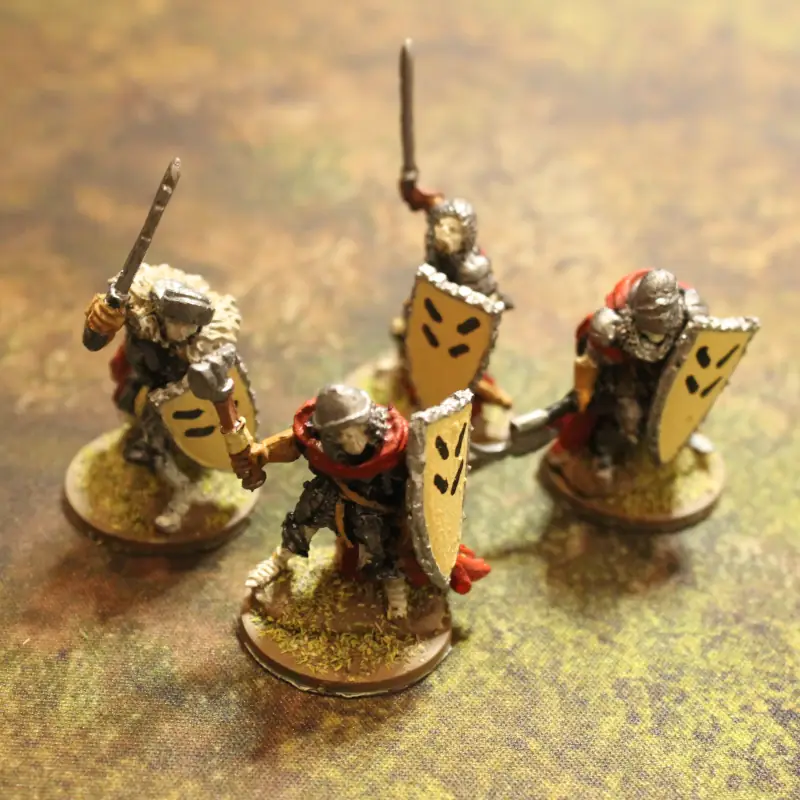
For the most part it played much like other Saga games. The extra unit types makes for a more interesting (and complicated) deployment, though it does stretch the army designs. Even with 8 points (rather than the usual 6 for historical Saga), it did feel there weren’t enough points to go round. You are definitely not going to get a Warhammer style army with lots of ‘standard’ troops as well as a range of monsters and creatures.
It was our first game though, with the armies mostly based on the figures available. It might be nice to have some skeletal horse, or something similar, for the Undead, though I’m not sure where the best place to get those from might be.
It was definitely an interesting game, and we learned quite a bit about the different unit types and their effectiveness. We didn’t make heavy use of advanced saga abilities (though the necromancy ability was used), mostly just going for magic and straightforward clash of arms.
Our next steps will be to tweak the armies and have a re-match at some point.
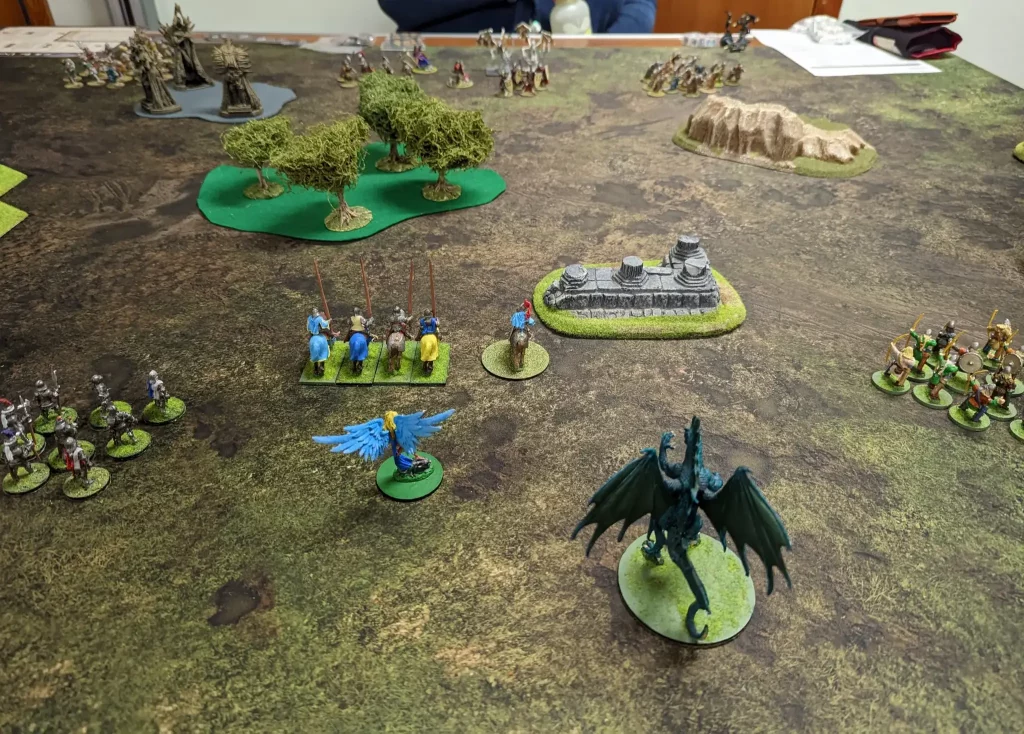
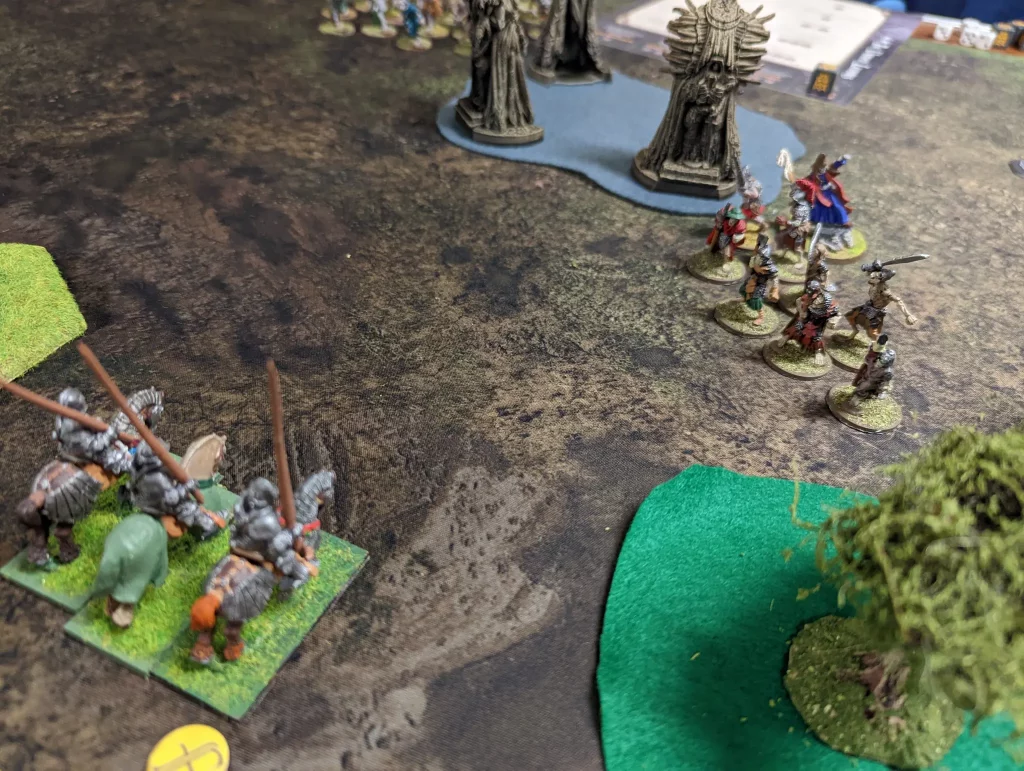


Great report Sam, it looked good too. 😀